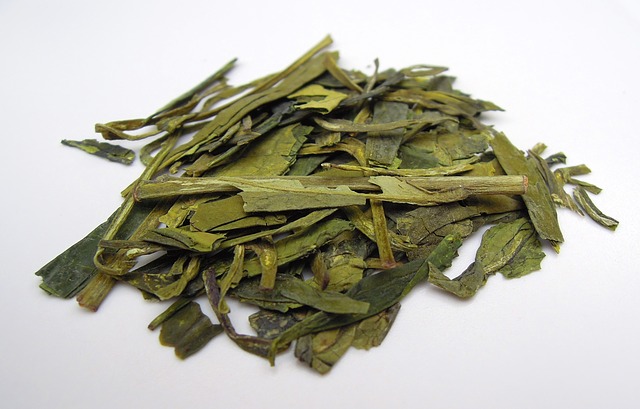Following our series of articles about different kratom alternatives, we’ll see today how kratom and sakae naa compare. Have they got similar effects and properties? Have they got similar side effects? Are they interchangeable? Can you substitute one for the other? Keep reading and find out all about kratom vs. sakae naa.
What is Kratom?
Despite its recent popularity, kratom is still unknown to many individuals. And many people wonder what all the fuss about it is. Kratom is a tree that grows in some islands of South East Asia. As a member of the coffee tree family, it poses some common properties with its cousin, such as stimulating and energizing. Although it is new to most of us, the plant has a great tradition in places like Thailand and Indonesia. In fact, people in those regions have used the plant for hundreds or even thousands of years to get energy and to treat a number of conditions.
Today, although kratom remains legal in most South East Asian areas, it is illegal in Thailand. However, there have been recent moves from the Thai Parliament to discuss the possibility of lifting the ban.
The plant’s properties are due to the many components that are present in its leaves, especially its alkaloids. The two main kratom alkaloids are mitragynine and 7-hydroxymitragynine, which act by binding to the opioid receptors of the brain. However, kratom has many other components which also contribute to its properties.
What is Sakae Naa?
Like kratom, sakae naa or Combretum quadrangulare is native to South East Asia. It belongs to the Combretaceae family, which is a genus that grows in tropical areas. It is a tall tree that can go up to 10 meters (32 ft). The plant became very popular in Thailand after the kratom ban, thanks to its similar stimulant effects. Additionally, it has been used in traditional medicine to lower fever, and to treat dysentery and to get rid of parasites such as worms.
Regarding its chemistry, sakae naa’s main constituent is combretol which is a type of flavonoid. Additionally, it contains other constituents such as other flavonoids and triterpenoids. As the plant is relatively unknown, there is not much information on how sakae naa’s components work on the system. Nevertheless, there are studies that show that the plant has certain liver protective properties.
Kratom Vs. Sakae Naa: Properties and Effects
As mentioned above, people in Thailand started using sakae naa after the kratom ban due to its similarities. In fact, both plants are very similar in both taste and appearance. Nevertheless, although they have some common properties, they are not exactly the same. Let’s see both below.
The properties of kratom are becoming popular in recent times, in part, due to the recent controversy caused by the intention of the FDA of scheduling its alkaloids in the Controlled Substance Act. Nevertheless, kratom advocates keep fighting for their right to have access to the plant, as they report it can alleviate some health conditions. Some of the properties of kratom include:
- Stimulant and energizing: some people take it to get some extra energy in the mornings.
- Analgesic and pain relieving: people use it to ease chronic pain caused by many different conditions.
- Soothing and relaxing: it can alleviate anxiety and stress.
- Sedating: in high doses, kratom can be sedating and contribute to relieving
- Mood elevating: it contributes to improving motivation and mental clarity.
- It alleviates opiate withdrawal symptoms.
On the other hand, sakae naa poses its own set of properties, some of them are similar to those of kratom. Sakae naa’s main properties are:
- Like kratom, it has stimulating and energizing effects: some compare its effects to the caffeine rush.
- Although it has secondary relaxing effects, these are mild. So, using it with the sole purpose of relaxing won’t be effective.
- Mood-lifting: like kratom, it can improve mood and motivation.
- Hepatoprotective properties: as mentioned above, sakae naa has protective effects on the liver.
- According to a 2020 study, Combretum quadrangulare may also be helpful for dealing with atopic dermatitis. Although this study was performed in mice, its results are still promising.

Kratom Vs. Sakae Naa: Side Effects
Like any other substances, both kratom and sakae naa can provoke some side effects that, in some cases can be very unpleasant.
When taking kratom, some individuals report the following side effects:
- Dizziness
- Nausea
- Constipation
- Headache
- Eye wobbles
On the other hand, some of the reported sakae naa side effects include:
- Dry mouth
- Constipation
- Loss of appetite
Finally, sakae naa can provoke weight loss, insomnia and darkening of the skin after prolonged use.
Nevertheless, although some people can experience some of the side effects mentioned above, others don’t experience any at all. On the other hand, other people can feel different side effects than the above.
Kratom Vs. Sakae Naa: How to take them?
There are different formats of kratom in the market, typically pills, powder, and tinctures. On the other hand, there are not many options of sakae naa and it’s typically sold in powder form. You can prepare tea to consume both products when they are in powder form. Additionally, both can be taken by using the toss and wash method, which consists of ingesting the powder and wash it down with a glass of water.
Regarding the dosage, the kratom dose will differ depending on the variety and the sought effect. Typically, it is stimulant at lower doses (2-3 grams), relaxing at medium doses (4-5 grams) and analgesic at higher ones (5-8 grams).
On the other hand, sakae naa’s typical dose will be around 7 to 10 grams.


